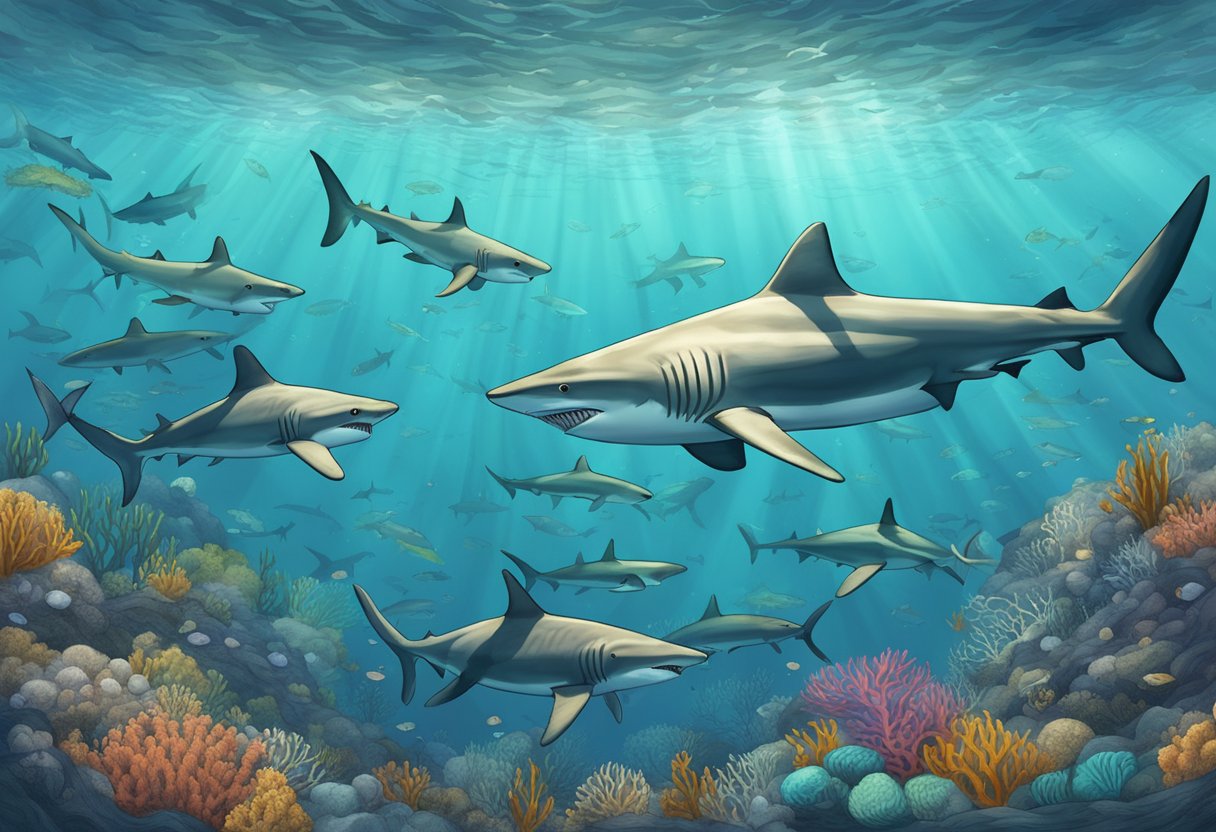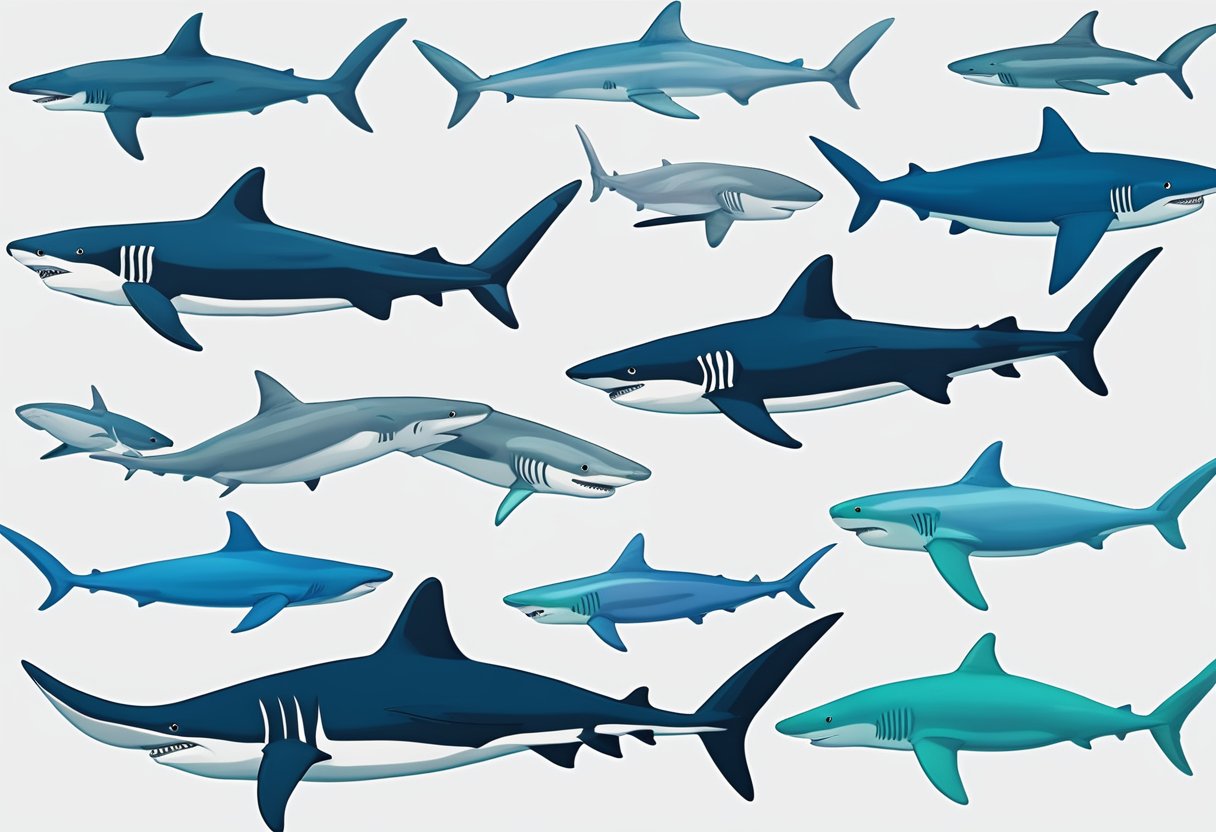The Ultimate Pet Care Quiz
Let's see if your pet care knowledge is purr-fect or if you're barking up the wrong tree!

Sharks are some of the ocean’s most fascinating and varied creatures, having adapted to their marine worlds over hundreds of millions of years. With over 500 known species, they come in an array of shapes and sizes, each occupying a unique niche within their ecosystem. From the deep-sea dwellers like the Greenland shark to the speedsters like the shortfin mako, every shark species reveals a different story about survival in the vast blue sea.

Understanding sharks begins with grasping their classification, which is a feat in itself given their diversity. These cartilaginous fish—meaning their skeleton is made of cartilage, not bone—are grouped into different orders that show off their physical and behavioral traits. While you might be familiar with the serrated teeth of the great white or the hammer-like head of the hammerhead shark, there’s so much more beneath the surface. These predators have evolved features perfect for their hunting lifestyles, with some sporting impressive camouflage abilities, and others developing highly sensitive electroreception to detect prey.
Sharks play a critical role in maintaining the health of the oceans. Their position at the top of the food chain means they can regulate the populations of species below them, indirectly preserving the balance of marine ecosystems. However, despite their importance and resilience, sharks face significant threats from human activities such as overfishing and habitat destruction, making their conservation a key issue for marine biologists and environmentalists alike.

Sharks are a fascinating topic, and you’re about to get up close and personal with how they are categorized. Get ready to dive into the world of cartilage and fins!
Sharks differ from your garden-variety goldfish in a very fundamental way: they are cartilaginous fish, meaning their structure is made of cartilage rather than bone. This club of flexible, light-framed swimmers includes not only sharks but also their skate and ray cousins, all snugly tucked into the class Elasmobranchii.
Sharks come with a toolkit of peculiar features that make them stand out. Their skin? Rougher than your grandpa’s beard thanks to dermal denticles. How many dorsal fins they rock varies, but you can bet on typically one or two for stability. Pectoral fins give them serious agility, and as for teeth, they never stop coming in. It’s an endless conveyor belt of bite in there!
But hey, let’s not forget about the spine—no bones about it, it’s all cartilage. And, those gill slits? They’re breathing in style with usually five to seven slots for that sweet, sweet O2. Lastly, some sharks sport barbels near their mouths, just to add a bit of understated elegance to their look.

Sharks are like the Swiss Army knives of the sea: elegantly designed with features that really make you go, “Wow, nature thought of everything!” So, let’s dive into these awe-inspiring physical attributes that make sharks the elite swimmers of the ocean.
When you think of sharks, does the might of a Great White Shark spring to mind, or perhaps the vastness of a gentle giant, the Whale Shark? Shark sizes are all over the map! For a bit of perspective, the Whale Shark can grow up to a whopping 60 feet, making it the largest fish in the sea. That’s about the length of a bowling lane! Meanwhile, on the other end of the scale, we have the pint-sized Dwarf Lantern Shark, a pocket-sized predator, if you will, maxing out at a mere 8 inches—small enough to literally fit in your hand!
| Common Shark | Size |
|---|---|
| Dwarf Lantern Shark | ~8 inches |
| Great White Shark | ~15-20 feet |
| Whale Shark | Up to ~60 feet |
No tour of sharkdom would be complete without marveling at their anatomy. First up, shark skin is not something you’d want to snuggle with. It’s covered with tiny teeth-like structures called dermal denticles which reduce drag and make sharks master swimmers. As for the true teeth, those are replaced as often as you lose hair—yup, sharks don’t bother with dentists.
Now, let’s chat snouts. The peculiar Goblin Shark, for example, sports a long, pointy snout that looks like something out of a fairy tale. And if it’s a unique look you’re after, you can’t beat the Hammerhead Shark with their head shaped like a ‘T’—nature’s version of a panoramic view. Meanwhile, dorsal fins are like the shark’s flagpole, each species displaying its own proud version.
| Shark Feature | Function or Characteristic |
|---|---|
| Skin | Covered in tiny dermal denticles for smooth swimming |
| Teeth | Continuously replaced, sharp for effective hunting |
| Goblin Shark Snout | Long and pointy, it’s a snatch-and-grab special |
| Hammerhead Head | Wide set, giving a superb field of vision |
| Dorsal Fin | Unique to each species, aids in stabilization |
From tiny to titanic, sleek to special, the physical attributes of sharks are designed for survival in the big blue. You might not find them cuddly, but their adaptations are truly remarkable!

Dive into the underwater world, and you’ll discover a fantastic variety of shark species each with its unique lifestyle and address in the ocean’s vast neighborhoods.
Whale Shark (Rhincodon typus): The gentle giants of the sea, you can spot these spotted behemoths cruising through tropical waters worldwide. Don’t let their size fool you; they’re filter feeders, scooping up plankton and small fish as they go.
Basking Shark (Cetorhinus maximus): Second only to their whale shark cousins in size, these leisurely swimmers love to binge on zooplankton. Seek them out in temperate oceans if you’re aiming to see the world’s second-largest fish.
Great White Shark (Carcharodon carcharias): Perhaps the most iconic of the bunch, these powerful predators prefer cooler, coastal waters. They’re kind of like the ocean’s roving troublemakers but play a vital role in maintaining marine balance.
Bull Shark (Negaprion brevirostris): These guys have a reputation for being aggressive and often visit shallow waters and even freshwater systems. You might bump into them in rivers and lakes—talk about a freshwater surprise!
Tiger Shark: The ocean’s version of a garbage disposal, tiger sharks aren’t picky eaters. They’re known for their broad diets and love for tropical and subtropical waters.
Blue Shark (Prionace glauca): Slender and fast, the blue shark is like the ocean’s sleek sports car, preferring the deep waters of the world’s temperate and tropical oceans.
Fun Fact: Did you know some shark species, like the Greenland shark, can glow in the dark? Talk about natural nightlights!
Sharks have homes in all corners of the world’s oceans. From the shallow coral-laden apartments of the tropical seas to the desolate deep-sea abodes of the abyss, sharks are some of the most adaptable tenants our oceans have to offer.
Remember: Sharks are as diverse as they come, each species with a preferred neighborhood. Whether it’s the cozy coral reefs or the vast open ocean, there’s a shark out there perfectly adapted to its chosen habitat.

In the ocean’s blue dining rooms, sharks exhibit a diverse array of feeding habits and social dances. Whether they’re solitary diners preferring a quiet bite or social swimmers that wouldn’t mind the company, these sea predators have a menu and behavior as varied as the depths they roam.
Sharks range from the massive whale shark that, despite its size, gently slurps up plankton like a vacuum cleaner with a filter feeder mode, to the nimble blacktip shark that’s all about the fast food life—darting and snatching quicker than you can say “seafood platter.” When it comes to chomping down their prey, it’s a tactical game. Ever seen a great white? They’re the apex predators with a taste for the finer things in life, like seals or the occasional tuna, taking their role at the top of the food chain very seriously.
When they’re not on the hunt, sharks also have a private life. Reproduction is not all roses and chocolates for sharks. Take the nurse shark, these slow movers prefer a laidback approach and can often be seen lying on the ocean floor piled up like a shark sleepover. Meanwhile, hammerhead sharks might form schools during the day, proving there’s safety in numbers, only to go their separate ways come snack time.
It’s a fish-eat-fish world down there, and sharks have honed their survival strategies like pros. Apex predators like sharks generally don’t have to worry too much about being dinner, but they’ve still got a few tricks up their fins. They are masters of stealth and power, often surprising their prey with speed or brute force. Our friends the dolphins may sometimes outsmart them, but sharks generally keep the upper fin in oceanic negotiations.

Hey there, before we dive into the nitty-gritty, let’s get a lay of the land. Conservation issues aren’t just a drop in the ocean; they are critical for sharks who are the bosses of the sea (I’m looking at you, apex predators). Read on to stay in the swim of things.
Fishing Practices: Let’s hook into the biggest issue first. Your seafood dinner might be more connected to the fate of sharks than you’d think. Overfishing isn’t just about catching too many fish—it’s a net problem for our toothy friends, too. Sharks, including grandeur great white sharks and funky-looking hammerhead sharks, get caught in the crossfire of fishing activities, whether they’re targeted or just bycatch.
Habitat Destruction: Sharks need homes too! Human activities like coastal development can renovate their underwater address against their will, pushing them out or downright destroying the crib.
Climate Change: You’ve heard about it everywhere; here it is again. Our carbon footprint doesn’t just walk over land; it swims into the ocean, impacting the fundamental structure of marine ecosystems where sharks hang their fins.
Management Strategies: Don’t worry; there’s a buoy of hope! Improved marine management is the key to keeping the sharks swimming happily:
Technology and Innovation: The oceanic equivalent of a security system, new tech helps monitor shark populations and fishing activities, keeping everything on the up-and-up.
Public Awareness: The power of knowledge! When people know more about why sharks are important (apex predators keeping things balanced, remember?), they’re more likely to support conservation efforts.
That’s the 411 on the ocean block. Remember, sharks have been navigating the seas for millions of years; with a little human push in the right direction, they can keep ruling the waves.

Dive into the ocean of knowledge and let’s uncover some fin-tastic insights about these enigmatic sea creatures, the sharks.
You might be surprised to learn that there’s quite the variety when it comes to shark species. From the striped tiger shark roaming tropical seas to the bulky, flat-headed hammerhead shark, the diversity is simply jaw-dropping.
With oceans teeming with life, there are over 400 species of sharks gliding through our planet’s waters. That’s more than the number of teeth in a shark’s mouth!
The dwarf lanternshark could literally fit in your hand – it only grows to a maximum length of around 20 centimeters. Talk about pocket-sized predators!
The whale shark claims the title of the heavyweight champion, stretching up to 18-20 meters in length. Seeing one is like spotting a school bus underwater!
Colorful coral reefs are the underwater metropolises for sharks like the reef shark, blacktip, and nurse sharks. They’re like the city slickers of the shark world, navigating the bustling reef life.
While most sharks are laid-back ocean wanderers, a few species such as the great white, tiger, and bull sharks have a reputation for being a bit more on the feisty side. It’s wise to respect their personal ocean space!